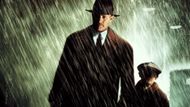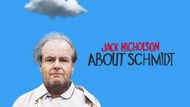Typecasting is the process of regularly allocating a celebrity to the same type of role. Celebrities are often identified with specific film genres, such as comedies, romance, or action. On most occasions, viewers have a hard time viewing them differently. However, some adventurous actors have made exceptions by taking on unexpected parts that fit those antiquated classifications.
These films not only shocked audiences, but they also shaped actors' careers. All the movies on this list helped typecast stars break out of their roles, take unexpected risks, and let people see them in a completely new way, showing that they could do much more than what was previously thought.
Disclaimer: This article is based solely on the writer's opinion. Reader discretion is advised.
Here is the list of the 7 movies that let these typecast stars break free from their most iconic roles:
7. Monster (Charlize Theron)

In Hollywood, Charlize Theron was frequently cast as an attractive model or lover. However, she defied the norm when she was cast as the serial killer Aileen Wuornos in Monster, a film based on a true story, in 2003. Theron wore fake teeth, colored her eyes, shaved her eyebrows, and put on thirty pounds to play Wuornos. She closely examined Wuornos's life in detail, and the result was raw and human. Audiences saw an injured woman, not just a film actress.
Critics praised her complete transformation, and she received the Academy Award, Golden Globe, and SAG Award for Best Actress. This role proved she could handle difficult, emotional parts. It opened more opportunities for her to play serious and more mature roles. She also managed to shed the label of being just a pretty woman. Theron said she felt liberated to take on more diverse and fascinating characters without being confined.
6. Eternal Sunshine of the Spotless Mind (Jim Carrey)

Jim Carrey was an actor of loud and goofy comedy in such movies as Ace Ventura, The Mask, and Bruce Almighty. Viewers expected him to be big and comical. He starred in Eternal Sunshine of the Spotless Mind (2004) as Joel Barish, a shy gentleman who falls in love and then has his memories of his love disappear. The director told Carrey not to improvise and be quiet. This was a break from his natural way of doing things. Carrey made a sad voice and a sad expression. It was a slight grief, a natural sense.
Most viewers said they forgot it was Carrey and only felt the heartbreak of the character. The critics commended him for being honest and open. His presence has allowed people to recognize him as more than just a comic, and as a result, he has landed theater roles.
5. Road to Perdition (Tom Hanks)

Tom Hanks is considered the kind, friendly, everyday guy. He played the role of a heroic or benevolent person you could trust over the years. He played a dangerous criminal named Ned in the 2002 film Road to Perdition. This was a big change in his image. His actions were also humorless as he committed violent acts with no reason to be heard. No one-liners, no grinning superhero, but black duty. He was a very conflicted person.
They had anticipated that he would play the part with a great deal of humor, but he took the role quite seriously. He demonstrated his ability to play a strong, sinister role. This altered the public impression of him and displayed his versatility as an actor. Following this, Hanks was no longer viewed as the nice guy. He demonstrated that even good actors can feature in intense dramas and critically fascinating sports.
4. About Schmidt (Jack Nicholson)

Jack Nicholson is recognized for his outrageous, seductive, and wild personas. It was the powerful dynamic man, per se. He starred in About Schmidt (2002) as a retiree named Warren Schmidt, who struggles with grief and isolation. He was a sad person full of regrets rather than swaggering. He said a few words, and life quickly vanished. It was a small part originally, but Nicholson turned it into something strong. It was a dominant performance, claimed by its critics. They were particularly impressed with how different it was from his previous tough guy portrayals.
It was his portrayal that made the viewers empathize with a man trapped in his regrets and altered the perception of Nicholson by the people. Instead of arrogance, they read the depth. It proved that he could not only play big-life characters but also show ordinary, vulnerable guys. He was able to escape the character of the intense movie star due to it.
3. Punch-Drunk Love (Adam Sandler)

Adam Sandler had been perceived as a typecast actor whose loud, goofy roles and broad comedies were the rule. In Punch-Drunk Love (2002), director Paul Thomas Anderson gave him a melancholy, introspective role as Barry Egan, a lonely and bewildered man. The style Sandler was accustomed to in this movie was a change of pace. He did not use his usual comical segments and comedy routines. Instead, he imagined a weak, sensitive man battling emotional pain.
Critics appreciated this calm, expertly managed piece, emphasizing Sandler's capacity to produce something more than laughter. This radical transition required him to demonstrate that he could work in more serious films. Following Punch-Drunk Love, Sandler assumed other roles that were not based on comedy and has earned more respect in the industry. Fans and reviewers began to recognize him as more than just a joke machine. In such a way, he chose this film to avoid typecasting.
2. Good Time (Robert Pattinson)

In the Twilight series, Robert Pattinson played an impassioned teenage vampire named Edward Cullen, and most people identified with him because of this. He also appears in Good Time (2017) as Connie Nikas, a bank robber in a bleak New York setting. It was hardly a glamorous, glittering romance. Instead, it depicted him as a frantic, thrashing man. He would be charming to deadly at the drop of a hat and under pressure.
Critics hailed this as his best performance to date, stating that it demonstrated his capacity to portray complex and multifaceted parts in dramatic independent films. His post-Twilight work was suspected until this moment. The perception was altered by Good Time. The audience thought that his performance was tense.
Pattinson's name began to be associated with serious character descriptions and arthouse filmmakers. His complexity and erratic nature caused him to transform from the current vampire heartthrob into a fearsome character. He was largely freed from the constraints of typecasting thanks to this movie.
1. Foxcatcher (Steve Carell)

Steve Carell was a long-time typecast star of comedies. He has warm, humorous characters in the Office, The 40-Year-Old Virgin, and Despicable Me. His portrayal of the heartless, wealthy man who funds Olympic wrestlers and ultimately murders them in Foxcatcher (2014) appears to have little to do with his wrestling career. He had loads of makeup, played with a low tone, and spoke in a disturbing, soft tone. In this character, none of his comic geniality survived.
It was referred to as a breakthrough by several critics, who described it as a terrifying, restrained performance. Many others at Cannes also believed that, with his exceptional theatrical abilities and his new appearance, this part began a new chapter in his career. Following Foxcatcher, the moviegoers and film creators learned that he is not only a funny man. He was an Oscar nominee and played more dramatic roles. In summary, he broke out from his comic stereotypes and demonstrated his ability to undertake dark and serious roles.
These performances marked a turning point for the actors involved. Each one stepped out of their comfort zone and showed they could take on roles far different from their usual image. The risks they took allowed viewers to see them in a new light. Instead of being stuck in the same type of role, they earned respect for their depth and talent. These films helped them break free from typecasting and build more diverse careers.
Love movies? Try our Box Office Game and Movie Grid Game to test your film knowledge and have some fun!
